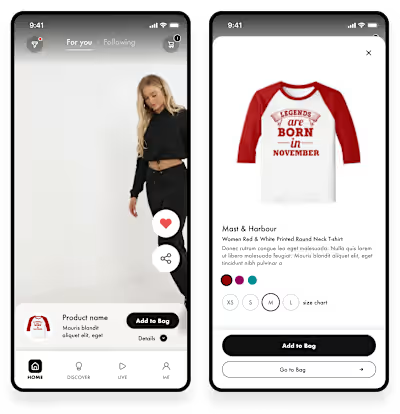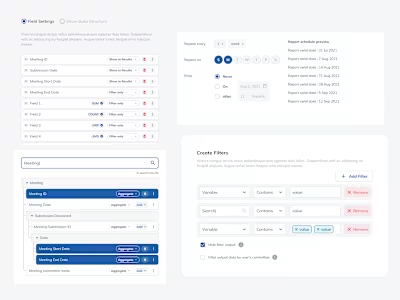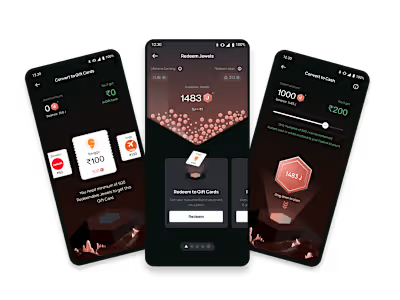Enhancing the onboarding of a NeoBanking App
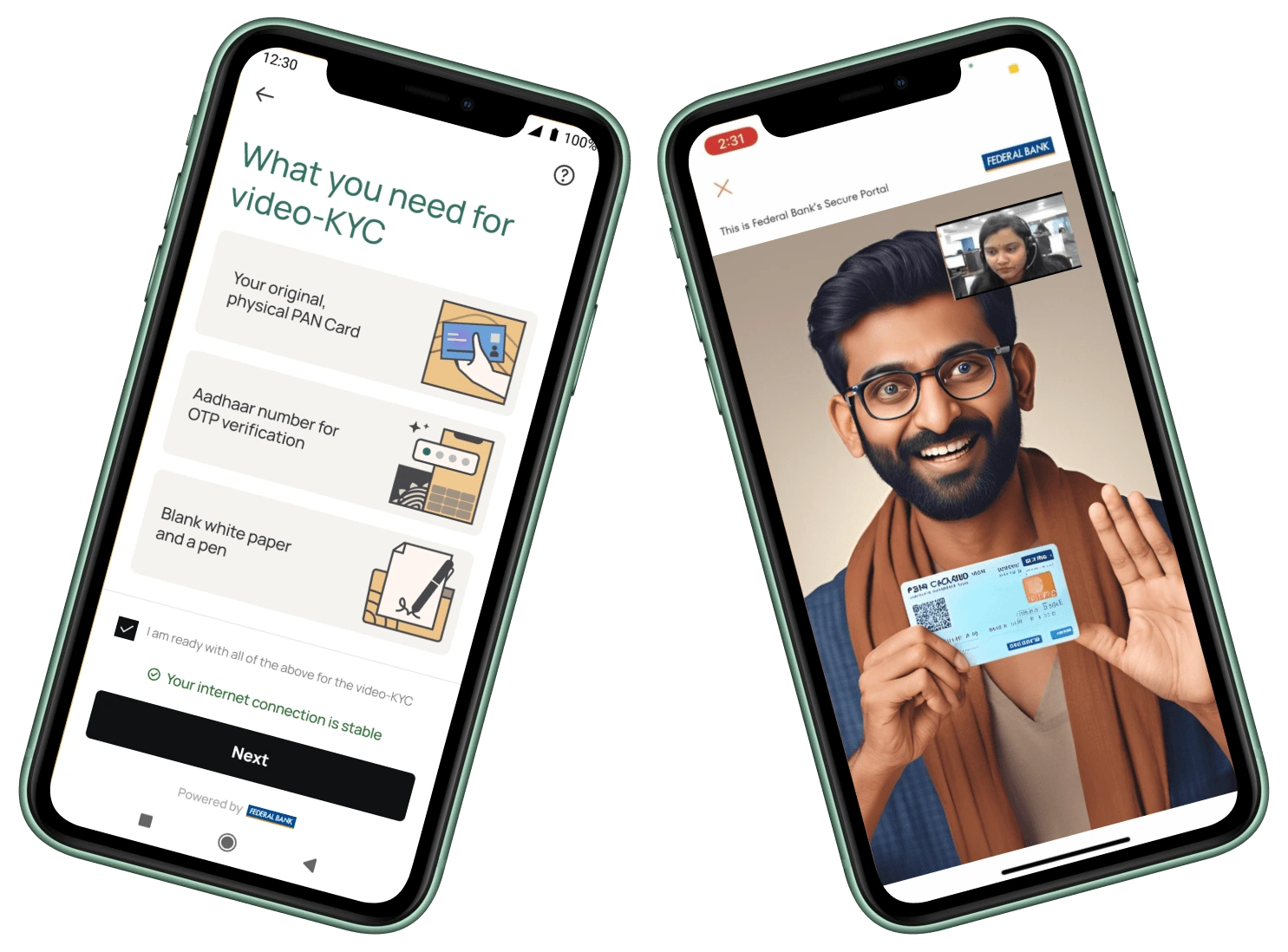
Background
The Video KYC (VKYC) process is an essential step for onboarding users on a Jupiter, the neo-banking app.
It is a regulatory requirement used by the banking partner Federal Bank to upgrade a user’s Minimum KYC account to a Full KYC (FKYC) account. Conducted via a video call, the process includes:
Verification: The agent cross-checks the user’s responses with profile details submitted during onboarding.
Document Validation: The agent captures live photos of the user and their original PAN card.
Signature Authentication: The user provides a live signature on a blank sheet.
Final Review: The agent’s decision is audited, and upon approval, the user’s account is upgraded to FKYC.
The Problem
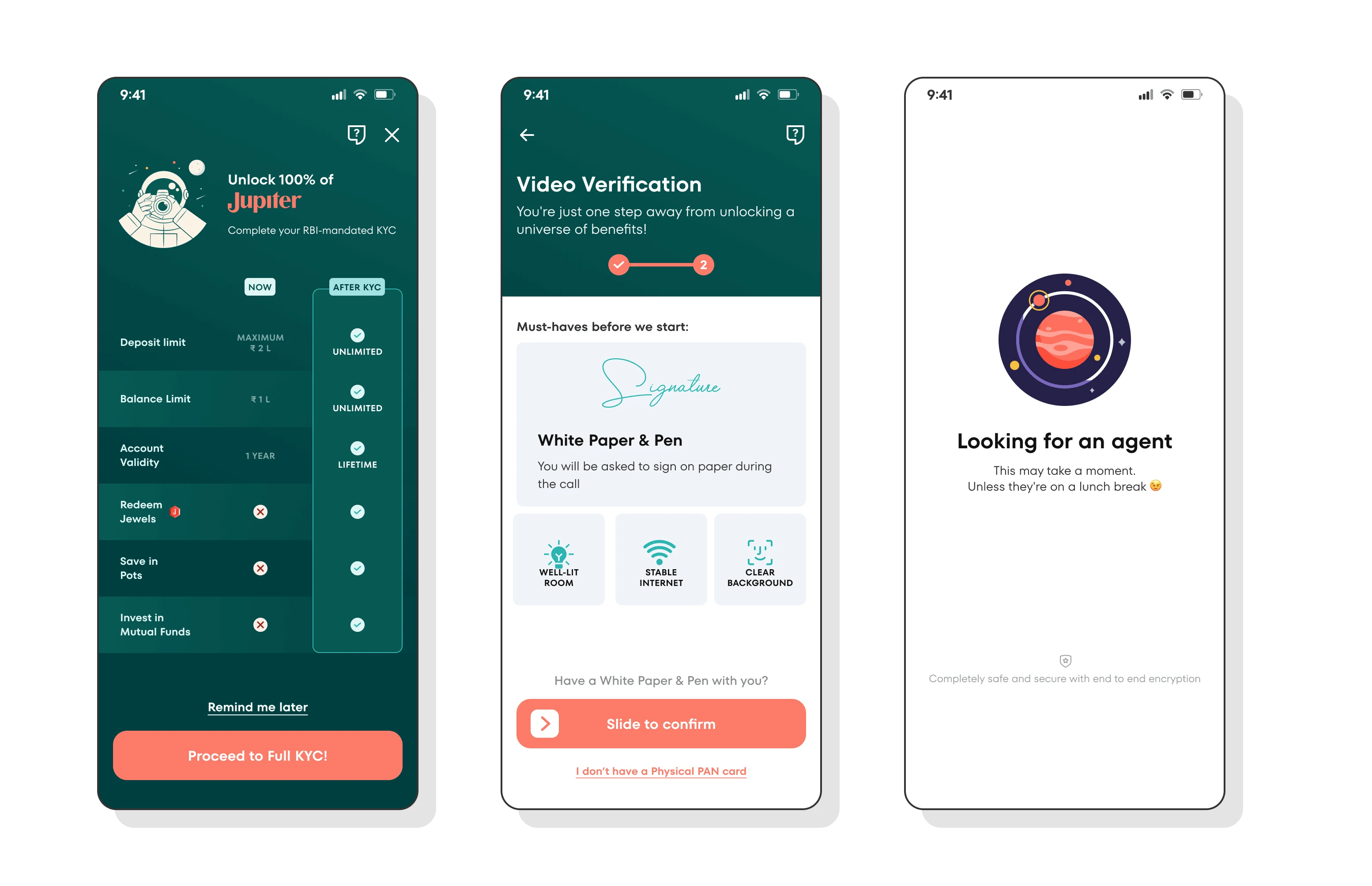
Current Screens
The video call failure rate (failed calls as a percentage of total connected calls) has risen significantly from 79% in December to 92% in March. This increase is primarily attributed to policy changes implemented by Federal Bank in the previous quarter.
Analysis
Rejection Data:
Third-Party Intervention: 15%
Weak Internet Connectivity: 12%
Income Mismatch with Reported Details: 12%
Lack of PAN or Pen & Paper: 6%
User Feedback from Voice of Customer, App Reviews, and NPS:
Process Length: 27% of users cite the flow being too long as a key issue (L2 driver for NPS).
Agent Behavior: 17% of users report rude or unprofessional behavior by officers.
Language Barriers: Users struggle with language issues during the VKYC process.
Lack of Awareness: Many users are unaware of the purpose of VKYC and the steps involved in the process.
Objectives
User Preparation: Help users understand why VKYC is required and ensure users feel prepared and alert for the VKYC call.
Expectation Setting: Clearly communicate the process, requirements, and estimated time for completion.
Anxiety Reduction: Minimize user anxiety about the VKYC process.
Error Minimization: Reduce call failures by addressing common challenges such as third-party involvement, internet issues, and incomplete prerequisites.
Enable Recovery: Simplify recovery from call failures by providing clear error explanations and actionable next steps.
Solution considered:
Approach 1: Simplified Onboarding:
Focuses on reducing friction by minimizing the steps in the VKYC process.
Provides a brief overview without in-depth preparation steps.
Trade-off: Higher risk of call failures due to insufficient user preparation.
Approach 2: Error Avoidance:
Involves visual communication, readiness checks, and proactive error mitigation.
Includes interactive feedback to confirm readiness before the VKYC call.
Trade-off: Slightly higher friction due to the two-step readiness check but ensures better-prepared users and fewer failures.
Approach 3: Heavy Handholding:
Emphasise on every detail of the potential error.
Visual aid for each requirement
Trade-off: Higher implementation complexity and potential lack of human touch.
We selected Approach 2 for its mixed approach to tackle the biggest obstacle to the conversion while balancing comprehension and flow length.
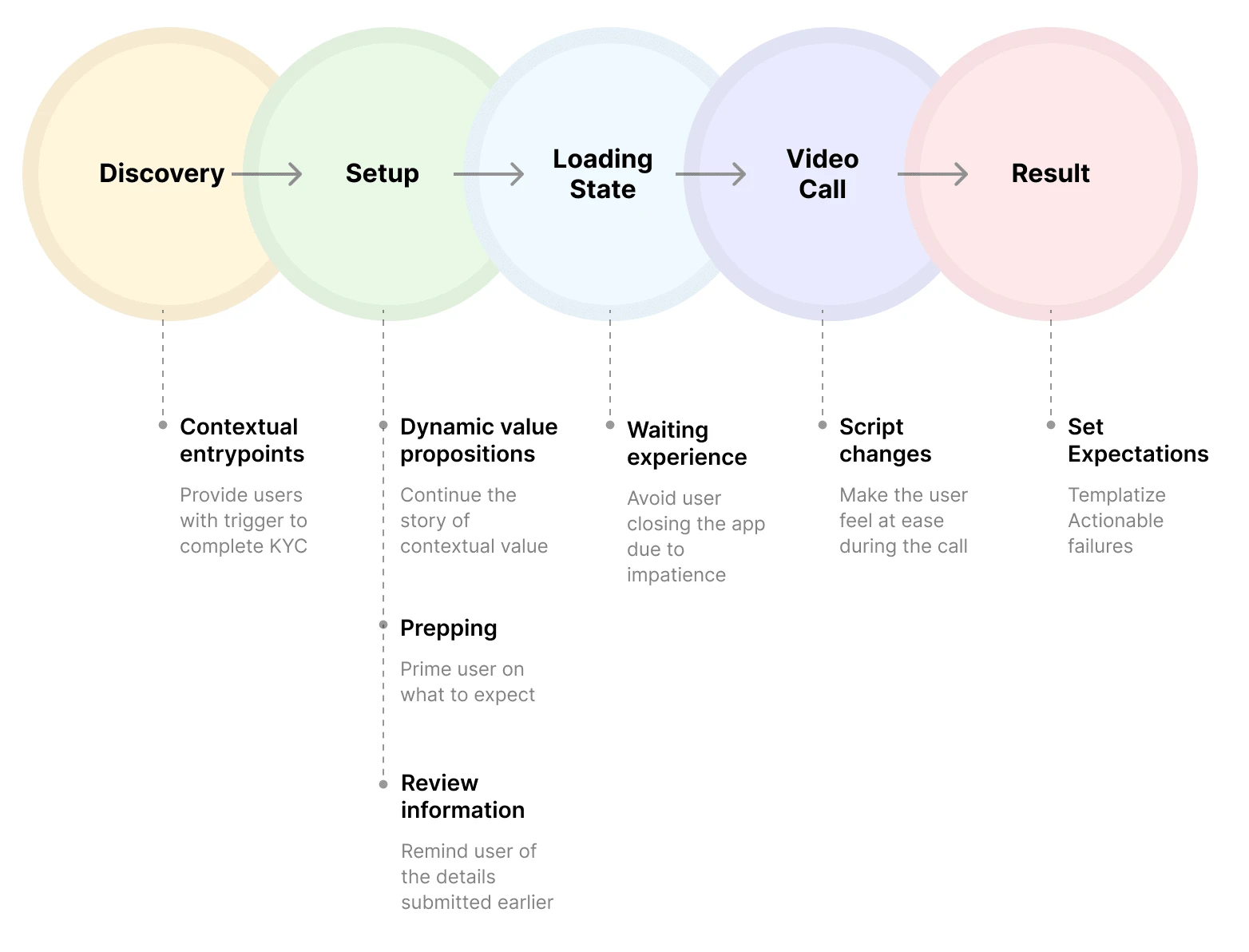
Interface design
Step 1: Contextual Discovery
Interactive illustrations explaining VKYC and its purpose.
Visual cues for readiness (e.g., green checks for completed steps).
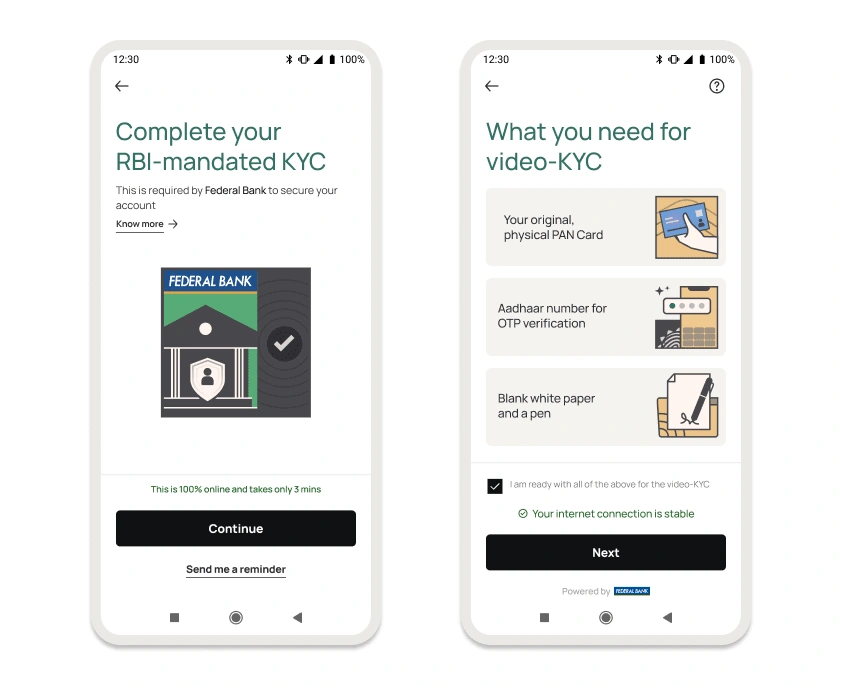
Step 2: Error avoidance
An intentional break in the flow introduced to highlight and address third-party errors.
Submitted details displayed to the users before the call to prevent mismatches.

Step 3: Waiting experience
An engaging loading screen added to set expectations for the questions during the call.
Tips for a successful call (e.g., "Ensure a quiet environment").
A virtual queue simulation introduced during the minute long wait to manage user impatience.
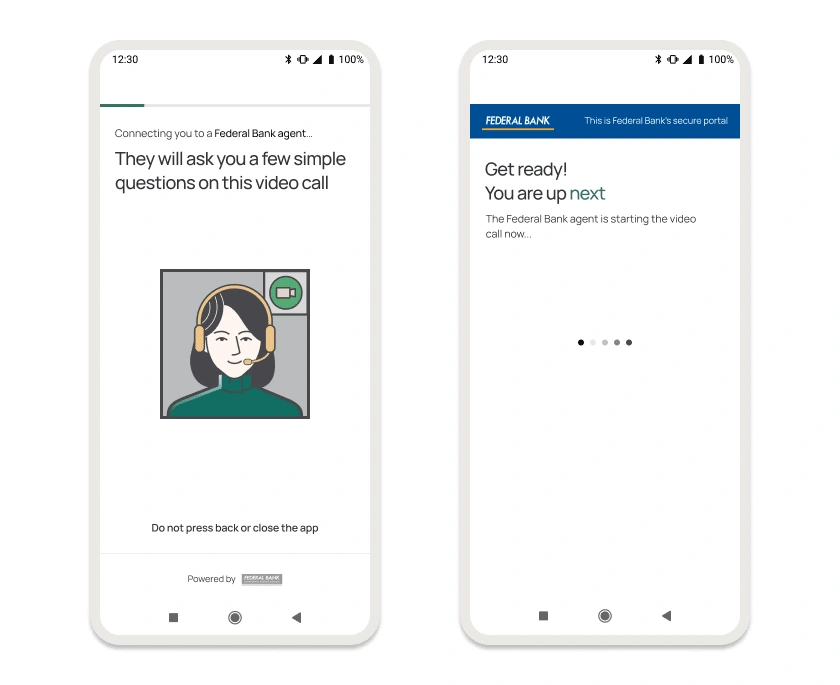
Step 4: Video call and result
The call concludes gracefully, providing a clear timeline for KYC approval
One-click retry option and help resources in case of call failure.

Results
Key Metrics:
Failure Rate Reduction: 22% decrease in VKYC call failures.
User Satisfaction: CSAT scores improved from 3.8 to 4.4.
Completion Time: Average time to complete VKYC reduced by 15%.
Learnings
Clarity Reduces Anxiety: Users responded positively to clear, concise instructions.
Preparation Boosts Success: A readiness checklist significantly decreased errors.
Empathy Matters Most: Recognising and alleviating user anxiety and frustration builds trust, leading to improved conversion outcomes
Like this project
Posted Dec 27, 2024
The Video KYC project aims to reduce call failures, and enhance user experience for smoother account upgrade.




